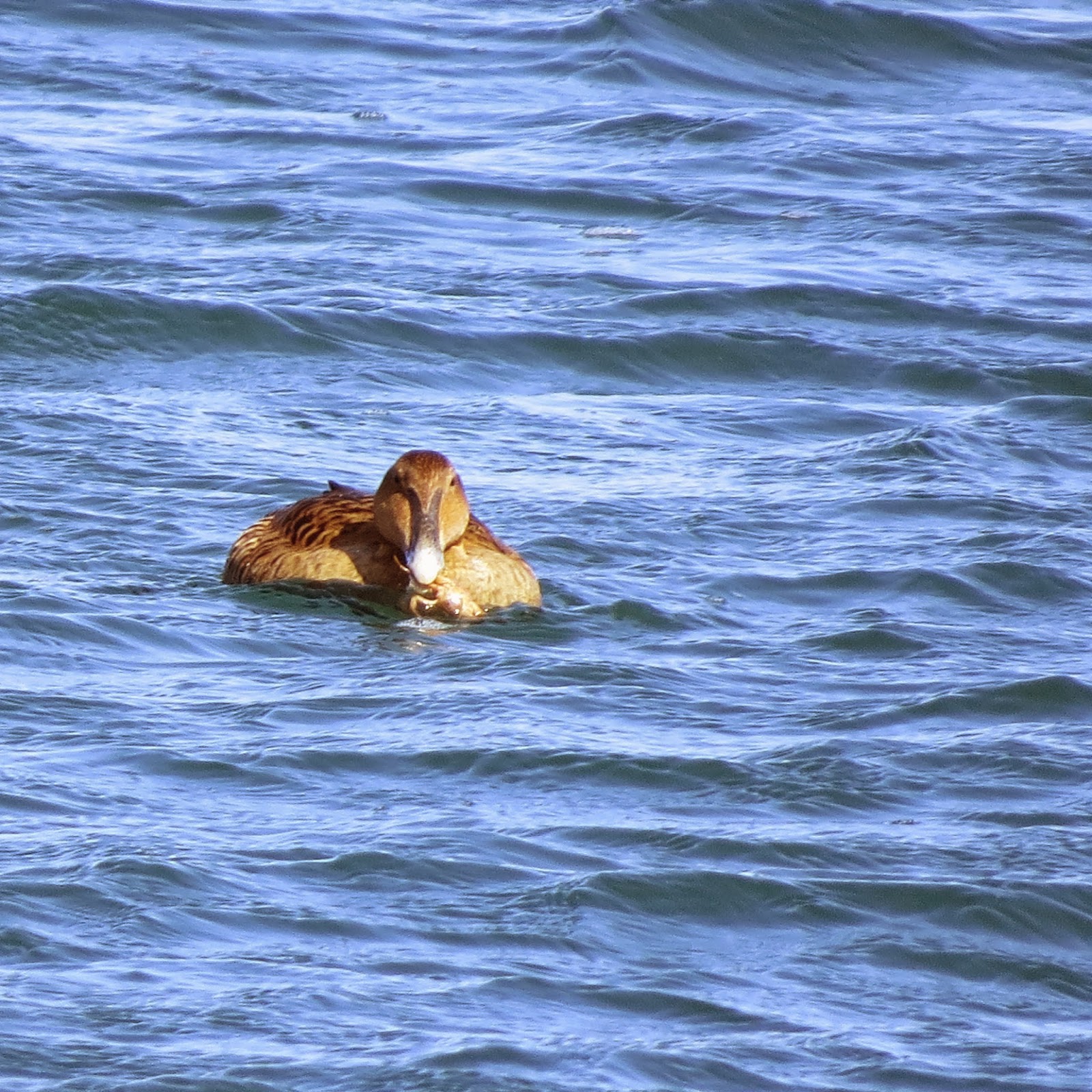Erica's treasures
Did you notice the glass knob among the pieces of sea glass in the photo above? I didn't like it too much because of the rusty hardware inside it, but apparently, it is a rare and wonderful piece of sea glass. Erica was thrilled to find it.
My treasures
(I was hoping for a snowy owl, but I failed. Good thing I found a few pieces of sea glass!)
It was chilly early in the day, but still a beautiful morning to be out in the fresh air on a beautiful beach! The ocean was sparkling in the sunshine.
I often wonder how uncomfortable this beach would be on your bare feet in the summer...
Herring Gull
Now, many people find gulls boring, and sometimes I feel that way too. But, this one looked particularly handsome in this light and setting. Don't you love the yellow eye with its bright red border?
We are still waiting for major melting to occur....and this coming week we may finally get it. Temperatures should be above freezing for five straight days. Perhaps by my next visit, the dune fence will again be doing its job.
On my way home, I stopped at Dorchester Harbor Walk on Columbia Point. I was still in need of a bird fix. Good thing I had my micro spikes with me for the walk was an icy mess!
More sparkles!
White-Winged Scoter
Red-Breasted Merganser
Surf Scoter
Now this is one interesting looking sea duck. Its nickname is "skunk-headed coot". I guess that's due to the combination of black and white, but to me, this duck deserves more than to be named after a skunk!
gas storage tank in Dorchester
The painting on this gas tank was designed by artist Corita Kent, who also designed the 1985 "Love" postage stamp with which you might be familiar.
Common Eider (female) with catch
in profile
Common Eider (male) with catch
Common Eiders feed on mollusks and crustaceans. They don't have any way to break the meat out of the shell. They simply swallow them whole; the shells are then crushed in their gizzard and excreted.
The down feathers of the Common Eider are highly desired as the lightest and most effective insulators known. Did the name Common Eider make you think of eider down? The down is plucked from the mother's breast and used to line the nest. It can be harvested without harming the ducks after the ducklings have left the nest.
Boston






















No comments:
Post a Comment